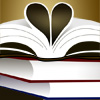In a small comparative mention, Adam Kelly, writing about “E.L. Doctorow’s Postmodernist Style” for The Los Angeles Review of Books, observes that scholars have praised Doctorow’s fiction but notes a contradiction.
“Reading this stream of glowing praise, scholars of American literature might have stopped to ask themselves when it was that they last read an academic essay devoted to Doctorow’s fiction. The answer is likely to be: not recently. For if the MLA International Bibliography is to believed, only one monograph or essay collection on Doctorow has been published since the turn of the 21st century. Over that same period, a number of Doctorow’s generational contemporaries have received copious attention. There have been 13 books solely devoted to Thomas Pynchon, 14 on Philip Roth, 26 on Toni Morrison, nine on Don DeLillo, and 18 on Cormac McCarthy, as well as numerous other monographs and collections with one or more of these authors’ names in the title.”
“In addition, all of these novelists—born, like Doctorow, in the 1930s—have literary societies and (with the exception of DeLillo) academic journals devoted exclusively to their work. Thomas Pynchon has two such journals. Yet there is no E.L. Doctorow Society, no Doctorow Review or Doctorow Notes. Even a contemporary like John Updike, who one might expect to offer less theoretical interest than Doctorow, has merited seven recent monographs (actually, 13 since 2000), a literary society, and a scholarly journal.”
Even?
Here’s the full article.





